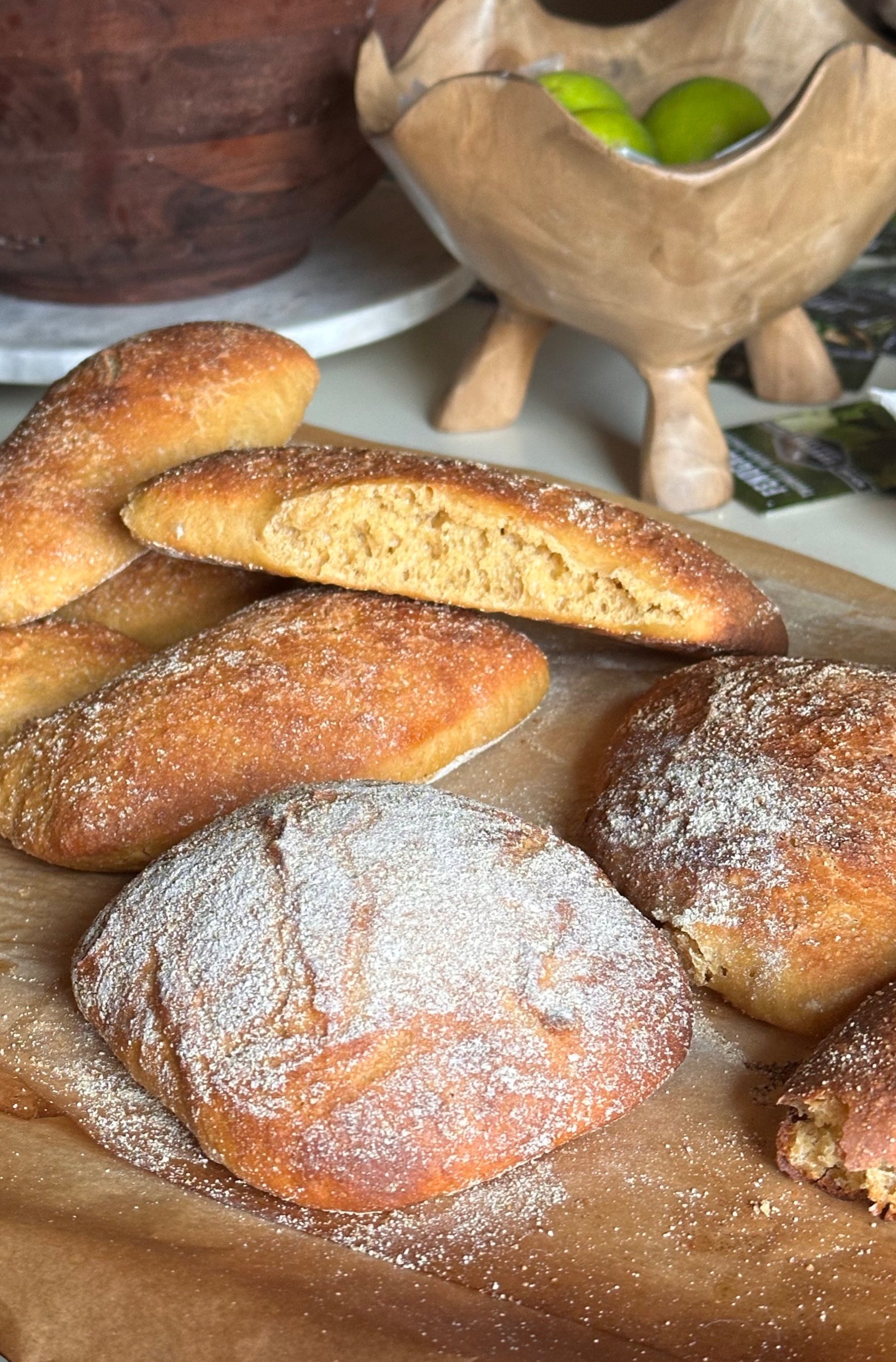NO DEAD BREAD?
RHB is committed to providing your family with nutrient dense bread & baked goods. All of the grain used for our baking is sourced from Grand Teton Ancient Grains. Check out their site by using the links below to learn more about the history of ancient grains, nutritional benefits, their farming practices & why this matters to you!
-
Nutty, slightly sweet, heartier texture, characteristic yellow color
-
Earthy, nutty, chewier texture
WHY SOURDOUGH?
The process of baking with sourdough is a practice our ancestors used to leaven their breads or to make them rise. Cambridge Dictionary defines “sourdough” as “a mixture of flour and water that is left to ferment (= change in a chemical process) and then used to make bread”
Learn more about the health benefits of sourdough here.
That said, just because it is labeled “Sourdough” doesn't make it healthy. The process of fermentation does create that chemical process to make nutrients available and give the bread rise. But, it also matters what you are fermenting. Grocery store flours may result in a taller and lighter loaves but with the trade off of health and quality. Using fresh milled, expertly grown, ancient grains in that fermentation process is what truly counts.
WHAT IS DISCARD?
You may see the term “discard” or “sourdough discard” on some of the menu items. This simply means inactive sourdough starter. Adding inactive starter does not provide leavening but does add a tang and depth of flavor to the recipe.
As you learned under the “why sourdough?” section, a sourdough starter is made through the process of fermenting flour & water in certain ratios to achieve a leaven for baking. During this process there are three basic stages the starter goes through.
The inactive phase: the culture of yeast & bacteria have eaten all the flour added to the mixture & is not actively fermenting because it has not been fed recently.
The active phase: the culture of yeast & bacteria are eating the flour added when we “fed” the starter & is actively fermenting & growing in volume.
The peak phase: the culture of yeast & bacteria have eaten all available food from the flour & is at it’s highest volume. Ideal for baking. As time continues to pass will return to the inactive phase.
